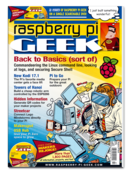Automating CUPS with shell commands
The Raspberry Pi lends itself well for use as a small print server, connecting printers to a number of computers on a network. The classic software solution for Linux print servers is the Common Unix Printing System (CUPS), which replaces less convenient printing services from the Linux and Unix environment, like lpd and lprng. Although many Linux users control CUPS in a web interface or with GUI programs, most of the steps involved in both of these approaches can be fully automated with a shell script.
To install CUPS, enter the commands:
$ sudo apt update $ sudo apt dist-upgrade $ sudo apt install cups printer-driver-gutenprint
[...]
Use Express-Checkout link below to read the full article (PDF).
Buy this article as PDF
Express-Checkout as PDF
Pages: 6
Price $2.95
(incl. VAT)
(incl. VAT)





